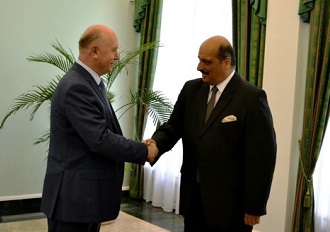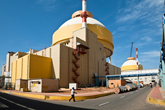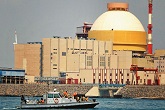KNPP would even survive an airplane crash- Russian design engineer
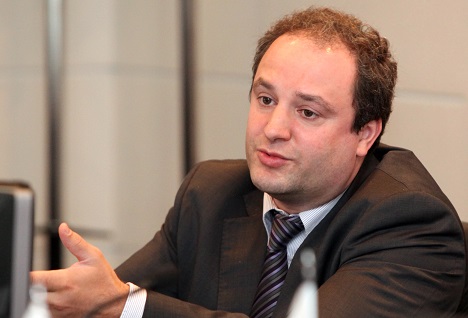
Denis Kolchinskiy. Source: Alexander Tomas
SPbAEP (a branch of OAO Golovnoy Institut VNIPIET) traces its history back to 1929. It is the only company in Russia which designs nuclear power plants with different types of reactors: VVER (water-water energy reactor), BN (fast-neutron reactor) as well as heat energy facilities.
Denis Kolchinskiy, the company’s chief project engineer had a lively and informative discussion with RIR’s Alexander Tomas, once and for all setting the record straight on safety issues concerning Kudankulam.
What changes related to safety systems does the Kudankulam Nuclear Power Plant have when compared to previous generations of nuclear power plants?
Kudankulam NPP was built in accordance with the modern project AES-92, which has unique characteristics. Two systems are envisaged in the project in order to ensure safety: the active one whose operation requires an electrical actuator and a passive one which uses natural force, for example, gravity force.
I will give an example: to remove heat from the reactor core where nuclear fuel is contained, it is necessary to supply water by means of pumps – it is the response of the active system. Now, the passive one: there is a vessel with water, and steam goes up by a pipe, condensates there and returns to the steam generator; in this manner, natural circulation is established. For the passive system to remove heat, no electricity is needed, no actions by the personnel are required. As soon as the temperature increases in the primary circuit, the system starts removing heat automatically. If such a system had been in place at Fukushima, no one would have ever known what Fukushima is.
For the event of loss of integrity of the primary circuit, there are a number of unique systems which are also passive. As we know, at Fukushima the impact of water from a tsunami wave caused damage of diesel generators and interruption of power supply to pumps. When the pumps shut down, heat removal discontinued and the core meltdown occurred.
We are designing the reactor so that the passive and active safety systems prevent the core from melting down. However, for the event of a hypothetical accident, our reactor provides for a special device – “molten-core catcher”. Should the reactor fail to be cooled down for some reasons whatsoever, the fuel inside would not meld down, it would descend and theoretically might burn through the reactor vessel, the molten core would go to the “catcher”, which would ensure its cooling down and prevent release of hydrogen.
The following day after the Fukushima accident, the designer company stated that according to their calculations the molten core could not burn through the reactor pressure vessel, but the molten core did burn through it. One should not rely only upon mathematical calculations. The event at Fukushima demonstrated that calculations may contain an error. This is why, although our calculations also show that the molten core may not damage the vessel, the “molten-core catcher” is a mandatory safety system included in the basic supply package of our project.
Because we should design power plants so that radioactivity would not go beyond the containment.
Is the ‘catcher’ included in the basic supply package?
Yes, the events at Fukushima showed that a catcher must be installed. Any calculations may turn out to be incorrect.
When we were designing the catcher, in Kurchatov Institute a full-scale experimental facility was created, on which fuel was specially molten and the molten matter flew out into the ‘catcher’ at a temperature of 2300 degrees Celcius. The ‘molten-core catcher’ is arranged as follows: there is a metal housing outside and the “sacrificial” material inside. When the molten matter gets into the ‘catcher,’ an endothermic reaction begins, i.e. a reaction with thermal energy absorption, which results in solidification of the melt. Besides, the material contains dysprosium, which absorbs neutrons, and this excludes the possibility of a chain reaction. The melt contains zirconium, which may release hydrogen at a high temperature and in reaction with water and, therefore, the sacrificial material contains substances which absorb hydrogen. The sacrificial material absorbs the melt and prevents it from reaching the metal vessel. We refer not only to calculations, but also on a series of experiments which were carried out and proved their absolute reliability.
You said that there is a basic supply package of safety systems. What additional option can you offer?
At the present day, there is the basic project that includes a basic supply package of safety systems which guarantee its compliance with the requirements for the safety of nuclear plants of Generation III+. In addition to the basic part of the project, there is also a number of options which may be installed at the request of the customer. Speaking again about Kudankulam NPP, an air-based passive heat removal system was installed at the request of the customer. In most cases, we install a water-based heat removal system because the air-based one is more expensive in operation. What does it mean?
In the case of loss of power supply, pumps that in normal operation remove heat from the power unit shut down. But the passive emergency protection system turns on and it begins, without electricity, removing heat to heat exchanges owing to thrust; in other words, it directs heat to the atmosphere for an unlimited period of time.
Most customers believe that the water-based passive heat removal system is absolutely sufficient and there is no necessity to install an air-based one. The key difference is that the air-based one can remove heat for an unlimited period of time, while the water-based one – for 72 hours without external replenishment of the tanks. If the external tanks are refilled, the water-based system will be able to operate for an unlimited period of time, too.
Do Russian projects of nuclear power plants take into account the environmental component – safety for the environment and personnel as well as the interests of local communities residing in the area of the NPP?
In general, in terms of negative impact on environment, nuclear power is the most harmless. There are no emissions of hazardous substances from a nuclear power plant into the environment. Each power plant carries out radiation monitoring of the situation around at a big and small distance from the plant. Nowhere in Russian facilities does the radiation background exceed the natural level. Fossil fuel-fired power generation means emissions of carbon dioxide into the atmosphere; the manufacturing of solar cell panels is associated with the production of a considerable amount of toxic waste.
Related:
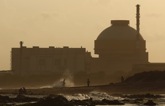
Russia powering India’s ambitious nuclear energy plans
Kudankulam criticality guarantees future success for joint projects
At Kudankulam NPP, particular attention is paid to fish protection systems. The station intake of cooling seawater is equipped with special fish protection structures which preserve not only fish, but also its nutritional base – plankton. In addition, Kudankulam provides for a desalination system to fully meet the own needs of the plant. Water from the local reservoirs is not used, and this is especially important, taking into account how strongly agriculture is developed in the region.
Let us imagine a post-apocalyptic scenario. Will the nuclear power plant survive an attack by aliens?
I think that in this case, there will be no need to save the nuclear power plant. Seriously though, Kudankulam NPP would survive an airplane crash. Some contracts stipulate it is as a separate clause: “protection against a fall of a commercial airliner.” We offer our customers such an option and provide for protection measures, in the first place, of the reactor building. Indeed, there are plans for civil defence – a number of measures to shut down the reactor and carry off heat, even in case of a power failure, are provided for.
For how long can the power plant operate without power supply?
The diesel generator has a reserve of fuel for two-three days, and that at the site would suffice for another seven days. Then, passive systems would ensure heat removal without any power supply of any kind for three days. And so on. In total, the plant can operate autonomously for around 30 days if there is no water nearby. If the station is situated on a coast, it can last endlessly. It is, however, definitely difficult to ensure protection against the fall of a flying saucer. Although, if we know its speed and calculate the angle of fall, the power plant can be protected against such an event, too.
What is Russia ready to offer India in the construction of power-generating units in future?
First of all, modern Russian designs have an optimised balance of active and passive safety systems. We have been working on this for the recent ten years. Now we implement such projects in Russia and offer them our foreign partners.
Second, it is necessary to note the reference of Russian technologies and the reactor VVER of Generation III+, which cannot by offered today by our competitors. By saying “reference” we mean not only the fact of obtaining a licence from the regulatory authority, but the experience of actual operation of power units built in accordance with our technologies in Russia and all over the world. The first and second power units at Tianwan NPP in China were put into operation in 2005 and 2007, correspondingly, and these units have undergone more than 20 inspections by the IAEA. In other words, the 1st and 2nd units at Tianwan NPP are the first power units in the world which have a double-wall containment, combination of passive and active systems, and a “molten-core catcher”. These are the only Generation III+ units in the world which are in actual operation and have complete reference. I will say it again: none of our competitors has such references at the present day.
For what percentage share of the cost of a power plant do safety systems account for?
The total cost of safety systems (emergency safety systems), including a catcher, passive heat removal system, backup diesel generators, passive filters, hydrogen recombiners, etc. – about 40 in total, account for less than 40-50 percent of the cost of a power plant. Although we have more safety systems than anyone else, our power plants appear to be less expensive because we build them in series. Each year, we put into operation 1-2 power units and have no breaks in commissioning our units. Today, there are 10 units under construction in Russia and about 18 in other countries of the world. As a matter of fact, we are the only supplier in the world who does it on a serial basis, and this allows us to achieve cost-saving.
What is the cost efficiency of innovative projects compared to power plants of previous generations?
All our efforts were aimed at ensuring the independence of all safety levels from each other, while also ensuring that the same functions are not overlapped in them. It is because overlapping involves extra equipment and, consequently, reduces economic efficiency. Potential customers ask two questions: “How safe is the power plant?” and “How much is the power plant?” In the basis of the modern Russian power units, the priority of safety is combined with optimised design solutions for equipment and construction timelines. As it was mentioned before, we are the only supplier in the world who builds units in series, which allows us to reduce cost.
During recent years, we have been contributing a lot of time for the elaboration of the construction technology and construction management rather than for design improvements. A nuclear power plant is one of the most complex objects erected by the human: more than 1 000 000 unique parts, several dozens of thousands suppliers, and around 1 000 contractors at the site. To manage all those flows, documentation, people, and equipment is a very difficult task. Many underestimate the complexity of the management process, especially in respect of construction overseas, which results in changes of construction timelines and considerable increase in the cost of projects.
In this respect, we paid particular attention to management technologies and developed the technology Multi-D, when project management, project design in 3D, supply management starting from the moment when the manufacturing of equipment begins, special resource – unique equipment management, human resource management, and construction schedule management are united in a single information space. All this is brought together in a common information space. Only we have such a management system. An example of the efficiency of this system: the latest unit which we put into operation in Russia last year two months before the planned date, and budget savings on the construction of the unit amounted to around 10%.
In other words, we possess a technology for managing the construction process, which allows us to build power plants in time and within the planned budget.
All rights reserved by Rossiyskaya Gazeta.
Subscribe
to our newsletter!
Get the week's best stories straight to your inbox
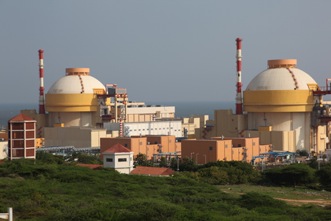
.jpg)
